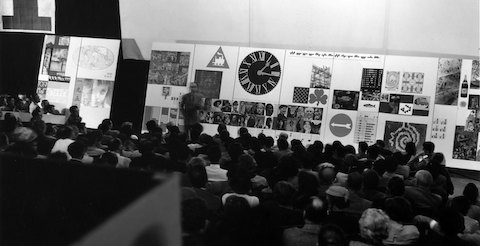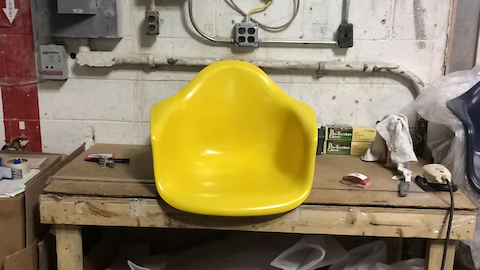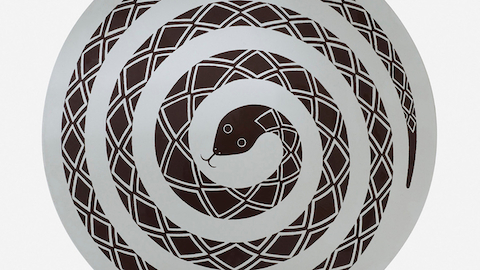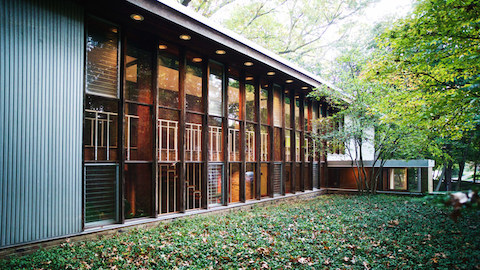In spring 1952, George Nelson, Charles Eames and Alexander Girard took over a lecture hall at UCLA’s chemistry building to deliver the second instalment of a ready-made lecture, based loosely on the theme of “art as a kind of communication”. The Sample Lesson, as it’s commonly known today (Nelson called it “Art X”, Eames called it “A Rough Sketch of a Sample Lesson for a Hypothetical Course”), evolved out of a proposed arts education policy that Nelson initiated at the University of Georgia in Athens at the behest of Lamar Dodd, Chairman of the Department of Fine Arts.
Georgia’s programme, like most art curricula at the time, was drawn in the classical tradition: courses in theory, classes in drawing and painting, design, craft workshops for weaving, screen painting and ceramics. Nelson observed that while this type of instruction had obvious value, the training didn’t always address the realities of its students, many of whom were studying art out of a strong inclination or interest, and not for professional training. In “Art X = The Georgia Experiment”, a 1954 essay that Nelson penned for Industrial Design magazine and later republished in his book Problems of Design, Nelson asks, “Does it make sense for a girl whose main ambition is to become a homemaker to pretend for four years that she is aiming for a career in sculpture or painting? Perhaps it does, but isn’t the real problem to foster understanding and creative capacity so that these qualities could be employed in any situation? And if this were the real problem, how would a school go about solving it? Is intensive instruction in drawing and modelling the best way? Or is this method used simply because it has always been the art school method?”
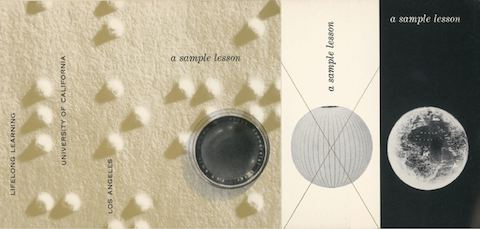
© 2013 Eames Office LLC (eamesoffice.com)
As dated as his housewife example may be, Nelson’s rationale in developing a universally approachable and adaptable art curriculum – one that gets at the essence of a lesson creatively without frittering away unnecessary hours in a studio – was not. He advocated that by using mechanised aids such as slides, film and audio, the learning experience could be expedited and augmented. “It was perfectly clear that much time was being wasted through methods originally developed for other purposes,” he explains. “For example, one class was finishing a two-week exercise demonstrating that a given colour is not a fixed quantity to the eye but appears to change according to the colours around it. In a physics class, such a point would have been made in about five minutes with a simple apparatus, and just as effectively.”
The faculty responded positively to Nelson’s ideas, and he was invited to form a small advisory committee and return with a more detailed proposal. He recruited Charles Eames to craft another presentation that further refined and expanded the initial line of thinking. This time, however, their progressive ideas were met with hostility and confusion. The faculty felt threatened by the idea of being replaced by machines, and that performance might be evaluated in quantifiable terms. “That night Eames and I discussed the turmoil created by what we had believed were innocuous proposals,” Nelson recalls. “It was our feeling that the most important thing to communicate to undergraduates was an awareness of relationships.” So they decided to put the proof in the pudding and lead by example: They would create a sample lesson. Recruiting Girard to the team, they set about creating their curriculum.
More a multimedia extravaganza than a lecture, the team used film, slides, sound, music, narration and even smell to elucidate their subject. According to Charles, The Eames Office had already been working on their film A Communications Primer, from which they borrowed several image sequences and which largely determined the subject of the Sample Lesson. (Nelson does not corroborate this story.) When the group came together to present their lecture, Nelson recalls, “It was as if we’d been sitting in the same room for weeks and months because everything fitted. Even allusions Eames would make would fit with allusions we would make. It was an extraordinary moment.” Nelson paints a vivid portrait of how the lesson played out in his 1954 essay:
A slide goes on the screen, showing a still life by Picasso. A narrator’s voice identifies it, adding that it is a type of painting known as "abstract", which is correct in the dictionary sense of the word since the painter abstracted from the data in front of him only what he wanted and arranged it as he saw fit. The next slide shows a section of London. The dry voice identifies this as an abstraction too, since out of all possible data about this area, only the street pattern was selected. The camera closes in on the maps until only a few bright colour patches show… then a shift to a distant view of Notre Dame, followed by a series, which takes you closer and closer. The narrator cites the cathedral as an abstraction – the result of a filtering-out process… the single-slide sequence becomes a triple-slide projection. Organ music crashes in as the narration stops. The interior becomes a close-up of a stained glass window. Incense drifts into the auditorium. The entire space dissolves into sound, space and colour.
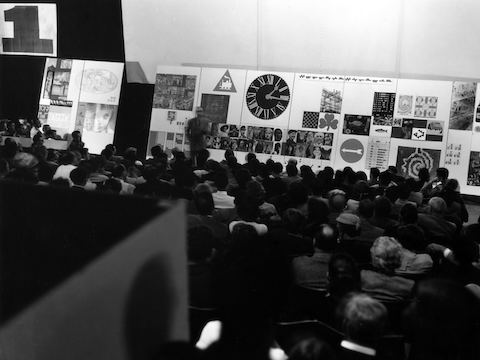
© 2013 Eames Office LLC ( eamesoffice.com)
The Sample Lesson enjoyed a six-day run at UCLA after its initial premiere in Georgia, and by the third show the auditorium at UCLA had reached capacity and audience members were spilling into the aisles. There were even repeat attendees, one of whom happened to be a young graduate student named Mildred “Mickey” Friedman. Friedman later went on to become the design curator at The Walker Art Center from 1972 to 1979. In 1974 she began research for a new exhibition entitled Nelson/Eames/Girard/Propst: The Design Process at Herman Miller (1975). In a recent phone interview from her home in New York, Friedman recalls her reasons for putting on the show. “I was very familiar with the work of all of those people, even though they didn’t live in Los Angeles at that point, and I was a big fan of the Herman Miller Company,” she says. “At the Walker, we always tried to bring new ideas to people through the design department, and one of the ways to do that was to do exhibitions. They had made a lot of very beautiful materials, beautiful furniture and other wonderful ideas about exhibitions themselves, so to me it was an ideal match.”
For her research, Friedman travelled around the country to interview each of the designers about their history with the company and with each other. At this time, Nelson, Eames and Girard had been largely out of touch, and the exhibition served as a coda for the decades of work that they had poured into Herman Miller since the early 1950s; it was also a nod to the course that Robert Propst would set the company on throughout the following three decades. “They were very different personalities, of course,” says Friedman. “Charles was the most elegant of the gentlemen, but they were all interesting and careful, and I think they were all happy to be involved with Herman Miller because Herman Miller was letting them develop new ideas, which is what they wanted to do.”
“At the Walker, we always tried to bring new ideas to people through the design department, and one of the ways to do that was to do exhibitions. They had made a lot of very beautiful materials, beautiful furniture and other wonderful ideas about exhibitions themselves, so to me it was an ideal match”.
- Mickey Friedman
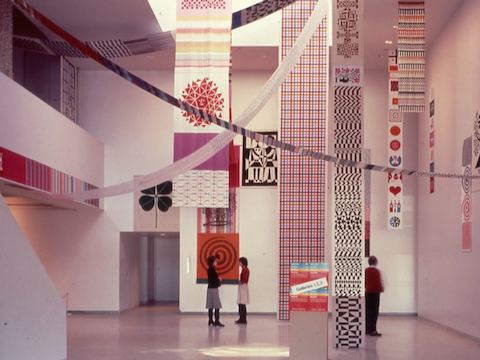
Nelson/Eames/Girard/Propst: The Design Process at Herman Miller (1975)
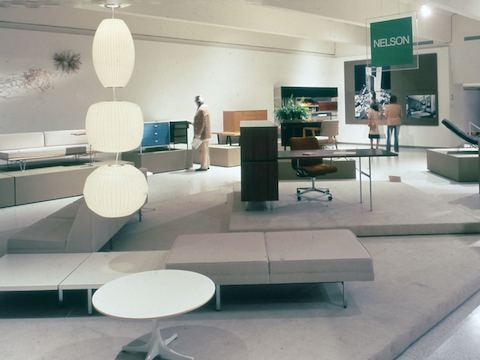
Nelson/Eames/Girard/Propst: The Design Process at Herman Miller (1975)
In her interviews, which we’ve recently cleaned and restored from the original tapes, Friedman asks each designer to tell her what they remember about the Sample Lesson, which left such an indelible impression on her over 20 years earlier. “As one of those fortunate students who experienced it, I am increasingly aware that the ‘sample lesson’ was… an immersion in large-scale sights and sounds years in advance,” she explains in her foreword to the exhibition catalogue. “A genuine attempt to broaden art education, the lesson demonstrated how well-chosen sight and sounds can compensate for what Eames still terms students’ ‘vitamin deficiencies’.”
But the sample lesson also serves as one of the earliest collaborations for Nelson, Eames and Girard beyond the realm of furniture design. While their recollections vary, and at times even contradict (as Charles puts it, the interviews are “a real Rashomon”), one truth remains: The Sample Lesson taught each designer something about the unique potential in their creative frisson, and today, despite obstinate and unyielding institutions or an unprepared public, the material sum of what they created endures. As Nelson concludes in his essay on the Georgia Experiment, “Art X said its piece in an industrial vernacular because industry has given us more and better ways to say things than we had before. The pictures, which flickered across the multiple screens, were made by machines, developed by machines and projected by machines. The voices, music and sounds were electronically recorded, amplified and played back. But it was people who said the words, wrote the music and made the final statement. This is why there is no need to be afraid of our tools, even in education. The teacher may become less visible in the new classroom, but he or she will still be there.”
“The pictures, which flickered across the multiple screens, were made by machines, developed by machines and projected by machines. The voices, music and sounds were electronically recorded, amplified and played back. But it was people who said the words, wrote the music and made the final statement”.
- George Nelson
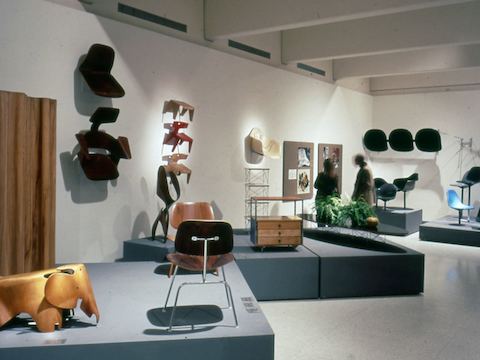
Nelson/Eames/Girard/Propst: The Design Process at Herman Miller (1975)
